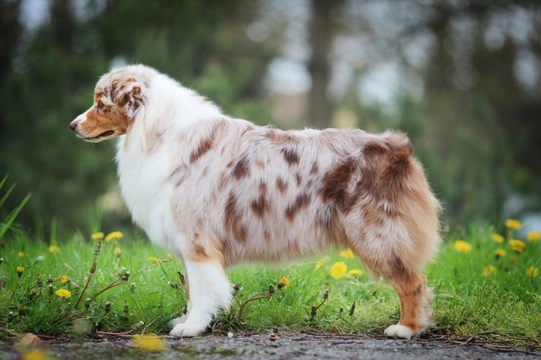
Why do some dog breeds have naturally bobbed tails?
Some years ago, researchers discovered the gene that causes dogs to have bob-tails which are often referred to as short-tails. Subsequent studies identified specific breeds that have the bob-tail gene mutation. Scientists used the Swedish Vallhund in their research which began at the end of 2010. They found that the mutation is found in a gene known as the T-box transcription factor which is essential at the embryonic stage of development and as such a test has now been created to identify whether a dog is born with a naturally bobbed-tail or whether the tail has been docked.
Breeds known to have the gene mutation
- The Swedish Vallhund can be tailless or they can have normal tails because the breed has been identified as carrying the gene mutation
- The Pembroke Welsh Corgican also be born with a naturally bobbed or short tail with some dog having no tail at all
- The Australian Shepherdcan be born with or without a tail, but they are more likely to not have tails than they are to have them with the reason being that short-tailed Australian Shepherds have the gene mutation in their DNA
- The Brittany Spaniel can have naturally bobbed/short tails or they can have long ones with shorter tails being more commonly seen in the breed that the latter. It is worth noting that some Brittany Spaniels are born with no tails at all
- Bourbonnais Pointer is one of France’s most popular hunting dogs and they can be born with either a long or short tail with many of them being tailless too
- Australian Stumpy Tail Cattle Dog is a cousin to the Australian Cattle Dog and they can have a naturally short or bobbed tail. It is worth noting that the Stumpy Tail is known to have some Dingo in the breed
- Catahoula Leopard Dogs which are often called Catahoula Curs are another breed that has the gene mutation which causes some dogs to be born tailless although this is rarer than in other breeds
- ThePolish Lowland Sheepdog is a breed that can be born with a naturally short or bobbed tail although when they do have a tail, it is typically that much shorter than in many other breeds
- The Schipperkecan have naturally bobbed tails because they too have been identified as carrying the gene responsible although studies suggest that there’s a 50% chance that a Schipperke would be born with a long or a short tail
More about the test
As previously mentioned, there is now a test that identifies whether a dog carries the gene responsible for them having bobbed or shorter tails which can establish whether a tail has been docked or whether it is a naturally occurring trait. The test identifies the following:
- CLEAR – shows that a dog gas 2 copies of a “normal” gene and that they will therefore have a long tail
- ONE COPY – established that a dog carries 1 copy of the “normal” gene and 1 copy of the gene responsible for “short-tails”. As such, a dog would have a short or bobbed tail
To date, no dogs that were tested had 2 copies of the short-tail gene, but research suggests that embryos with 2 copies do not survive and are therefore never born. The tests confirm that dogs with 1 copy of the gene mutation and 1 copy of a normal gene will have short or bobbed tails with some being born tailless whereas dogs with 2 copies of the normal gene would be born with long tails providing there are no other factors that need factoring in.



